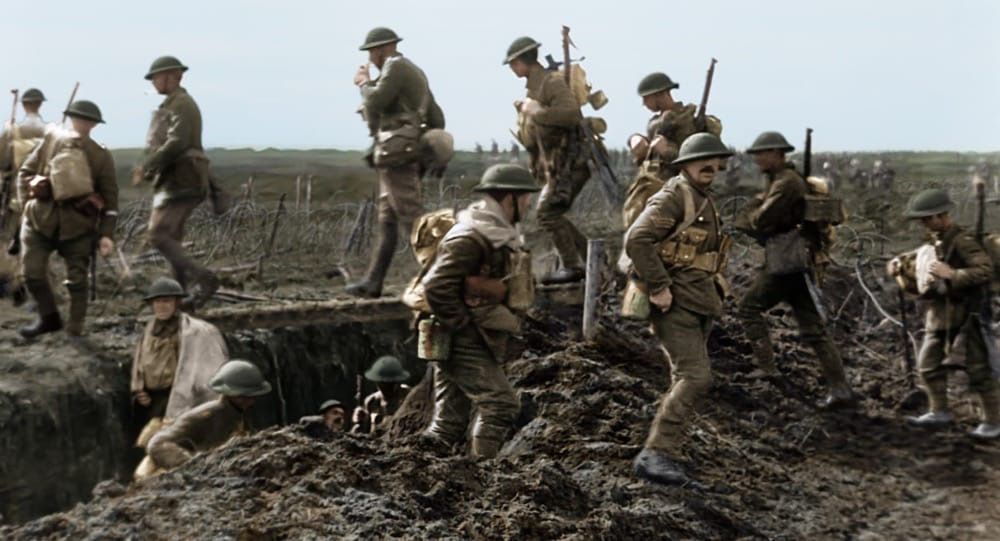They Shall Not Grow Old is a film of uncanny and quotidian horror, of great sacrifice and great staggering normalcy in a time of nigh incomprehensible conflict. It’s also about film’s ability to capture history and its inability to ever really resurrect what is irretrievably lost. It’s an often staggering technical accomplishment because of and despite of its capacity for running up against technical limitations. Commissioned to commemorate the centenary of World War I’s end, Peter Jackson’s haunting documentary weds a trove of source materials into a transportive eerie exercise in historical footage. He takes a beautiful collage of first-hand interviews with elderly British Great War veterans, recorded by the BBC in the middle of the twentieth century, for a narration, the average experience of a soldier in this conflict described in vivid, lively memories. He lays it over film largely taken at or near the front, a steadily accumulating montage of documentary footage woven into a trench-side view of the war: large stretches of boredom and squalor punctuated by sheer terror, all held to the terrifying backbeat of irregular explosions — often in the distance, but one never can tell when it’ll smash into one’s position. The film starts powerfully, and yet as a rather standard exercise, nothing Ken Burns couldn’t do as good or better on an off day. There’s a square little nitrate-grey frame that shows us early days of enlistment and patriotic fervor. But then Jackson, in warfare filmmaking as intimate on out as his Tolkien adaptations are epic on in, introduces a visual conceit that blooms into unnatural life as the army ships out. The frame fills the screen, in subtle 3D and hushed, respectful colorization. Far from the Turner-produced classic-Hollywood-defacing crayon jobs of the late 80’s, this soft dusting of studiously researched color brings the crisply and carefully restored footage out of the distant past and into a collision with the present, a dusty history book blearily drawn through a scrim of modern technology creating the effect of an old memory clawing back to life. Sometimes the images are startlingly real, tactile muck and flashes of personality cracking and crackling on century-old images accompanied with invisibly convincing Foley and ADR. Other times the movement has a slight haze, the color and the grain — joined and often slightly above the image in a light, barely-perceptible dance of pans and zooms — creates a fortuitous ghostly dance. It’s a documentary of haunted immediacy, at once real and unreal, a researched recreation layered over a moving-snapshot memory, that tells a story of young men sent off to die. They are now forever stuck in the past, caught in the moment of bravery, camaraderie, fear, injury, and death. (This is an unblinkingly gruesome movie at times, uncensored and unflinching.) Jackson brings them to life through the words of men who are still astonished to have survived, and through film that, too, survives. It can be restored. They can not.


No comments:
Post a Comment